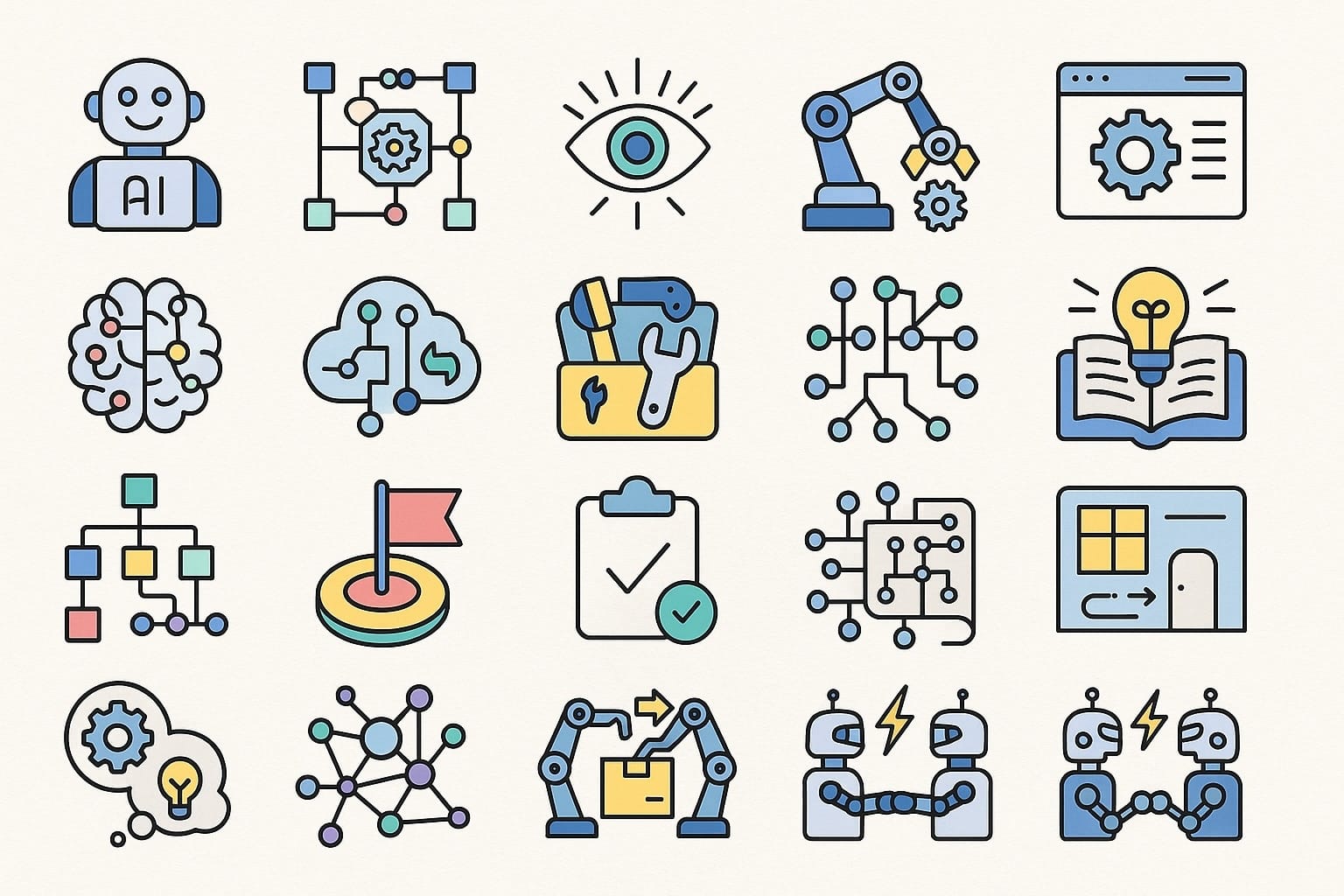Sure! Here’s the translation:
—
AI agents are no longer science fiction. From intelligent conversational assistants to systems that plan, execute tasks, and collaborate with one another, the new software paradigm is increasingly present in our lives. But do we really understand how they work? This glossary explains the key terms that define their architecture and behavior.
In recent years, advancements in language models have paved the way for a new type of software: artificial intelligence agents. Unlike traditional chatbots, agents can reason, remember, interact with external tools, make autonomous decisions, and in many cases, work as a team with other agents.
But behind that simple conversational appearance lies a complex infrastructure. Understanding how they operate requires familiarity with a series of technical concepts that define their design, capabilities, and limitations.
Below is a guide to the 20 fundamental terms to understand the world of AI agents:
1. Agent
An autonomous entity capable of perceiving its environment and acting upon it to achieve defined goals. It uses prompts, contextual data, and available tools as its foundation.
2. Environment
The context, virtual space, or system where the agent operates. It can be an isolated environment (sandbox), an API, a website, or a network of agents.
3. Perception
The agent’s ability to interpret data from its environment: user inputs, system signals, tool statuses, etc.
4. Action
The operation or task executed by the agent in response to an input or stimulus. This could be a query, calculation, API call, or interaction with another agent.
5. State
The current representation of the environment or the agent itself at a given moment. It includes key information for decision-making.
6. LLM (Large Language Model)
A large language model that acts as the agent’s “brain.” It enables the interpretation of text, generation of natural language, and reasoning about inputs.
7. LRM (Large Reasoning Model)
A variant of the model focused on complex reasoning, slower than traditional LLMs but more accurate in deep, multi-step analyses.
8. Tools
External functions sets that the agent can use to enhance its capabilities: search engines, databases, code generators, calculation tools, etc.
9. Memory
A subsystem that allows the agent to store and retrieve information about past conversations, previous states, or accumulated learnings.
10. Knowledge Base
A structured or semi-structured repository where the agent can consult lasting information: facts, documents, semantic relationships, etc.
11. Orchestration
The process that coordinates all parts of an agent, from input interpretation to execution and delivery of responses.
12. Planning
The agent’s ability to determine in advance a sequence of actions to achieve a goal.
13. Evaluation
A process by which it is analyzed whether the agent has successfully fulfilled its mission. It may include metrics for accuracy, efficiency, or human feedback.
14. Architecture
The overall technical design of the agent. It defines how its modules (memory, tools, logic, interfaces) relate to each other and how it behaves in different situations.
15. CoT (Chain of Thought)
A reasoning technique in which the agent breaks down a complex task into explicit intermediate steps to enhance its accuracy.
16. ReAct (Reasoning + Acting)
An iterative operational model that combines step-by-step reasoning with action execution, adjusting the plan dynamically.
17. Multi-Agent System (MAS)
An architecture where multiple agents cooperate or compete within a common environment. They share tasks, exchange information, and achieve collective goals.
18. Swarm
An organizational form where multiple agents, without a centralized hierarchy, collaborate in a self-organized manner, inspired by biological behaviors (such as ant colonies or bee swarms).
19. Task Handoff
A mechanism through which one agent transfers the responsibility for an action to another, preserving context. Key in complex workflows.
20. Agent Debate
A structured discussion process between two or more agents that argue different positions, validate solutions, or generate more robust responses.
A new paradigm that requires new languages
Just as the development of the internet brought about concepts like client-server, DNS, or backend, the rise of AI agents is generating a new terminology necessary to understand and build this technology.
These terms are not only of interest to engineers or researchers; they are also crucial for designers, entrepreneurs, product managers, educators, and any professional who wants to understand the inner workings of new autonomous artificial intelligence systems.
—

